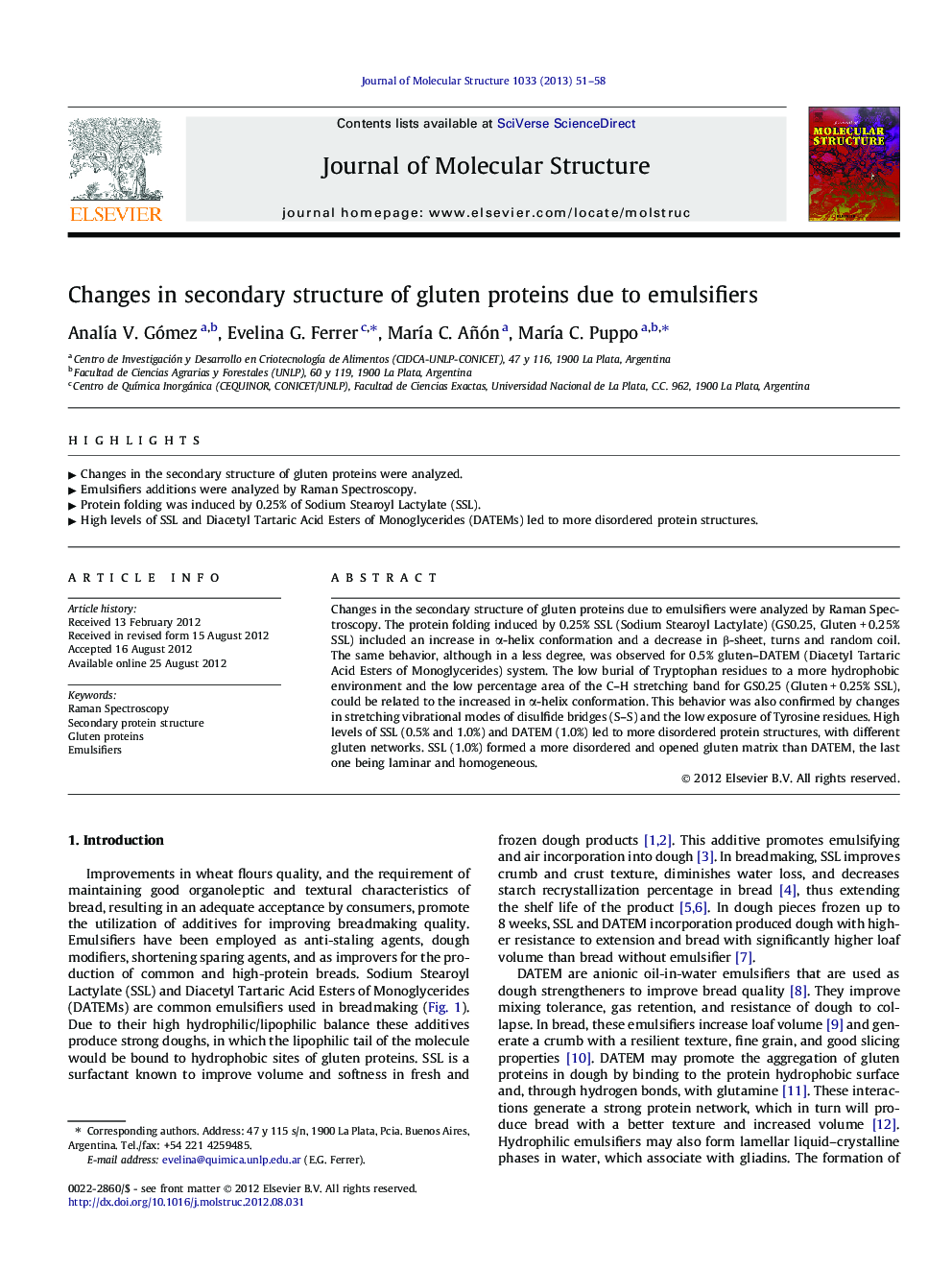| کد مقاله | کد نشریه | سال انتشار | مقاله انگلیسی | نسخه تمام متن |
|---|---|---|---|---|
| 1403342 | 1501781 | 2013 | 8 صفحه PDF | دانلود رایگان |

Changes in the secondary structure of gluten proteins due to emulsifiers were analyzed by Raman Spectroscopy. The protein folding induced by 0.25% SSL (Sodium Stearoyl Lactylate) (GS0.25, Gluten + 0.25% SSL) included an increase in α-helix conformation and a decrease in β-sheet, turns and random coil. The same behavior, although in a less degree, was observed for 0.5% gluten–DATEM (Diacetyl Tartaric Acid Esters of Monoglycerides) system. The low burial of Tryptophan residues to a more hydrophobic environment and the low percentage area of the C–H stretching band for GS0.25 (Gluten + 0.25% SSL), could be related to the increased in α-helix conformation. This behavior was also confirmed by changes in stretching vibrational modes of disulfide bridges (S–S) and the low exposure of Tyrosine residues. High levels of SSL (0.5% and 1.0%) and DATEM (1.0%) led to more disordered protein structures, with different gluten networks. SSL (1.0%) formed a more disordered and opened gluten matrix than DATEM, the last one being laminar and homogeneous.
► Changes in the secondary structure of gluten proteins were analyzed.
► Emulsifiers additions were analyzed by Raman Spectroscopy.
► Protein folding was induced by 0.25% of Sodium Stearoyl Lactylate (SSL).
► High levels of SSL and Diacetyl Tartaric Acid Esters of Monoglycerides (DATEMs) led to more disordered protein structures.
Journal: Journal of Molecular Structure - Volume 1033, 6 February 2013, Pages 51–58